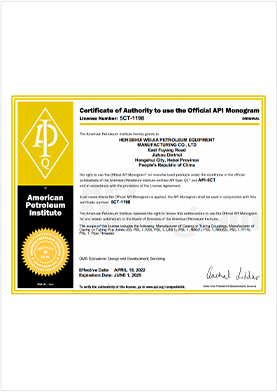- Afrikaans
- Albanian
- Amharic
- Arabic
- Armenian
- Azerbaijani
- Basque
- Belarusian
- Bengali
- Bosnian
- Bulgarian
- Catalan
- Cebuano
- Corsican
- Croatian
- Czech
- Danish
- Dutch
- English
- Esperanto
- Estonian
- Finnish
- French
- Frisian
- Galician
- Georgian
- German
- Greek
- Gujarati
- Haitian Creole
- hausa
- hawaiian
- Hebrew
- Hindi
- Miao
- Hungarian
- Icelandic
- igbo
- Indonesian
- irish
- Italian
- Japanese
- Javanese
- Kannada
- kazakh
- Khmer
- Rwandese
- Korean
- Kurdish
- Kyrgyz
- Lao
- Latin
- Latvian
- Lithuanian
- Luxembourgish
- Macedonian
- Malgashi
- Malay
- Malayalam
- Maltese
- Maori
- Marathi
- Mongolian
- Myanmar
- Nepali
- Norwegian
- Norwegian
- Occitan
- Pashto
- Persian
- Polish
- Portuguese
- Punjabi
- Romanian
- Russian
- Samoan
- Scottish Gaelic
- Serbian
- Sesotho
- Shona
- Sindhi
- Sinhala
- Slovak
- Slovenian
- Somali
- Spanish
- Sundanese
- Swahili
- Swedish
- Tagalog
- Tajik
- Tamil
- Tatar
- Telugu
- Thai
- Turkish
- Turkmen
- Ukrainian
- Urdu
- Uighur
- Uzbek
- Vietnamese
- Welsh
- Bantu
- Yiddish
- Yoruba
- Zulu
Understanding the Role and Importance of Casing Pup Joints in Oil and Gas Operations
Understanding Casing Pup Joints An Essential Component in Oil and Gas Operations
In the oil and gas industry, the integrity and reliability of well construction are of paramount importance. One of the critical components that contribute to the effectiveness of casing operations is the casing pup joint. This article explores the concept of casing pup joints, their function, types, and significance in drilling and production processes.
What is a Casing Pup Joint?
Casing pup joints are short lengths of pipe that are used to connect two larger sections of casing in a well. They typically range in length from a few feet to several feet and are designed to help achieve precise casing lengths during installation. The term pup joint is derived from standard terminology in the industry, where pup refers to a smaller version of a standard casing joint.
Functions of Casing Pup Joints
The primary function of casing pup joints is to accommodate specific wellbore configurations. When drilling a well, it is crucial to maintain the proper casing depth to ensure that the well is adequately isolated from surrounding formations. In cases where the lengths of the available casing pipes do not match the required depth, pup joints provide the necessary adjustment.
Additionally, casing pup joints play an essential role in maintaining the pressure integrity of the well. They are designed to handle the same pressures and loads as full-length casing joints, ensuring that the well can withstand the forces exerted during drilling and production activities.
Types of Casing Pup Joints
Casing pup joints come in various types, depending on their specifications and the materials used in their construction. The most common types include
casing pup joint

1. Plain Pup Joints These are simple, straight lengths of casing with no special features. They are designed for general applications where standard connections are adequate.
2. Threaded Pup Joints These joints feature threaded ends for easy connection to casing and other components. They allow for quick and efficient installation, which is critical in time-sensitive drilling operations.
3. Specialty Pup Joints Some pup joints are designed for specific applications, such as high-temperature or corrosive environments. These joints may utilize specialized materials or coatings to enhance their performance and longevity.
Significance in Drilling and Production
The significance of casing pup joints extends beyond their immediate functionality. They play a critical role in the overall efficiency and safety of drilling and production operations. By allowing for precise casing lengths, pup joints help minimize the risk of wellbore instability and ensure that the casing is properly anchored in the formation.
Moreover, the correct use of casing pup joints can lead to cost savings. By reducing the amount of waste and ensuring that casing lengths are accurate, operators can optimize their resources and decrease the overall costs associated with drilling and completion.
Conclusion
In summary, casing pup joints are indispensable components in the oil and gas industry, serving a vital purpose in the construction and maintenance of wells. Their ability to provide flexibility in casing lengths and maintain pressure integrity makes them a crucial part of drilling operations. As technology continues to evolve, the design and application of casing pup joints will undoubtedly advance, further enhancing their effectiveness and utility in the field. Understanding the role and benefits of these joints is essential for engineers and operators striving for excellence in their drilling and production efforts.
-
Tubing Pup Joints: Essential Components for Oil and Gas OperationsNewsJul.10,2025
-
Pup Joints: Essential Components for Reliable Drilling OperationsNewsJul.10,2025
-
Pipe Couplings: Connecting Your World EfficientlyNewsJul.10,2025
-
Mastering Oilfield Operations with Quality Tubing and CasingNewsJul.10,2025
-
High-Quality Casing Couplings for Every NeedNewsJul.10,2025
-
Boost Your Drilling Efficiency with Premium Crossover Tools & Seating NipplesNewsJul.10,2025







